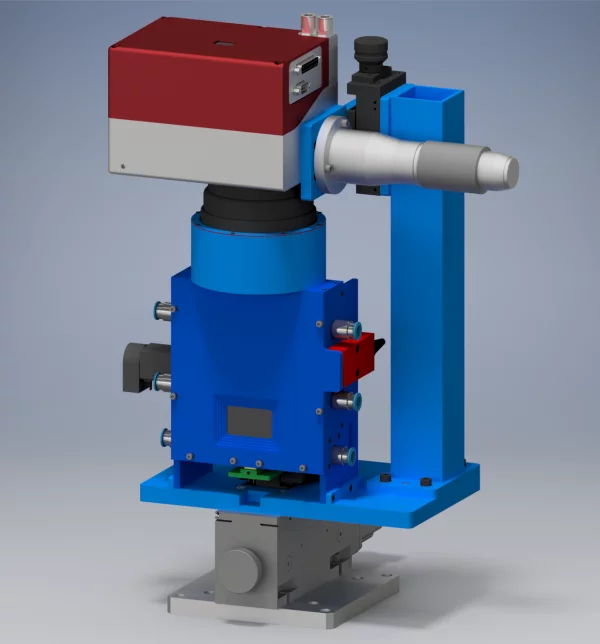A miniaturized selective laser melting (miniSLM) device was developed to perform operando X-ray diffraction and imaging experiments at the Swiss Light Source. The device exhibits the full functionality of a commercial SLM device.
Description
A collimated infrared laser beam is deflected by a 2-axis scanning unit into the main chamber. The laser beam is focused onto a 12 × 12 mm2 build stage that can be translated vertically with a travel range of 12 mm and sub-micron step size. The build stage can be heated using a silicon-nitride resistive heater. Powder recoating is based on a hopper feeding system. The powder reservoir can be moved across the baseplate with the aid of a motor-spindle assembly. The device is completely closed, preventing laser light or particles to escape. The chamber is continuously flushed with high purity argon gas. With the aid of manual flowmeters, a slight overpressure is created in the chamber to avoid oxygen contamination by the outside atmosphere. The whole setup (laser, scanning unit and printing chamber) is cooled down with a closed-loop air-water exchange based chiller. The video below describes the basic principle behind operando X-ray diffraction during SLM.
Technical details
| Laser | ||
| Type | redPOWER® continuous wave Fiber Laser | |
| Wavelength | 1070nm | |
| Maximum power | 500W | |
| Spot size | 25 µm - 250 µm | |
| Max scanning speed | > 2000mm/s | |
| Device | ||
| Dimensions | 15mm x 20mm x 30mm | |
| Build plate | 12mm x 12mm | |
| Maximum build height | 8mm | |
| Maximum temperature | 150°C | |
| Maximum angle tilt stage | 20° |
Publications
-
Hocine S, Van Swygenhoven H, Van Petegem S
Verification of selective laser melting heat source models with operando X-ray diffraction data
Additive Manufacturing. 2021; 37: 101747 (16 pp.). https://doi.org/10.1016/j.addma.2020.101747
DORA PSI -
Hocine S, Van Petegem S, Frommherz U, Tinti G, Casati N, Grolimund D, et al.
A miniaturized selective laser melting device for operando X-ray diffraction studies
Additive Manufacturing. 2020; 34: 101194 (9 pp.). https://doi.org/10.1016/j.addma.2020.101194
DORA PSI -
Hocine S, Van Swygenhoven H, Van Petegem S, Chang CST, Maimaitiyili T, Tinti G, et al.
Operando X-ray diffraction during laser 3D printing
Materials Today. 2020; 34: 30-40. https://doi.org/10.1016/j.mattod.2019.10.001
DORA PSI
